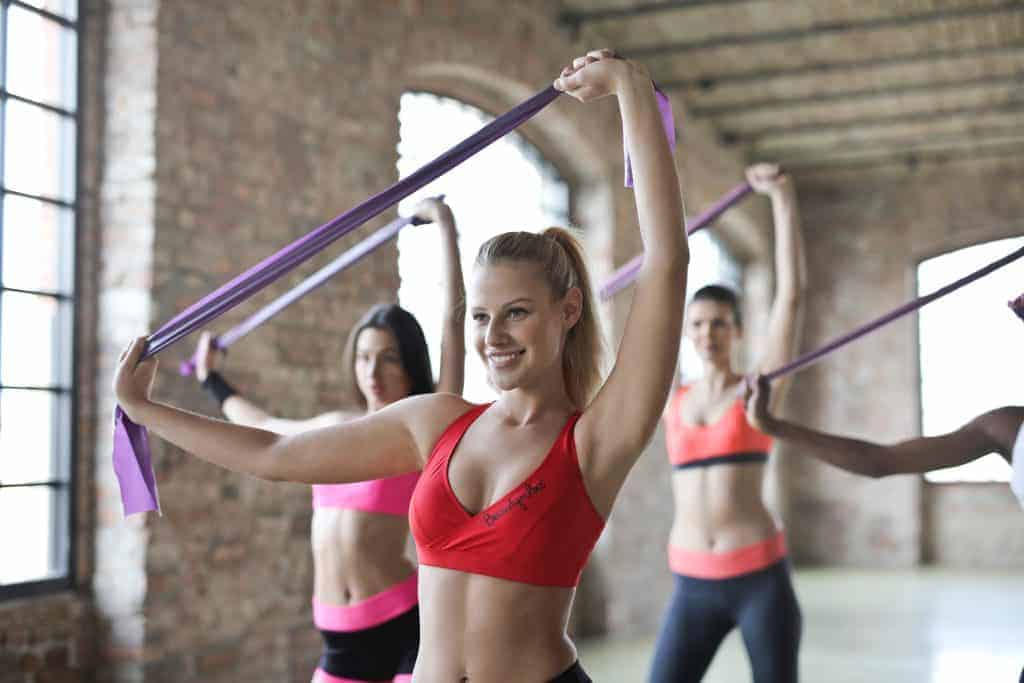Many gyms rely on group classes. Anyone can join, they are motivating, and the instructor’s enthusiasm ensures that you enjoy sweating for an hour each time. However, it’s not the best way to train and may even yield little to mediocre results. In this article, you’ll learn why.
5 reasons why you’re better off not doing group classes
When I refer to group classes here, I mean classes where a large group (10+) of people is trained in a fast-moving manner, with or without weights.
Think of various classes involving fast movements to upbeat music, as well as “ab workouts.”
Before we begin, what I do NOT mean by group classes in this case:
Yoga and tai chi-like classes performed in tranquility, or small-group training with a maximum of 6 people and more personalized attention.
There are, however, plenty of reasons to engage in group classes.
Most group classes involve poor technique.
It’s often cringe-worthy to see people in a group class performing a squat, barbell row, or deadlift.
An instructor simply can’t give enough attention to 20 people at once, so they have no control over your technique.
The Range Of Motion (the extent of the movement) used in the exercises is also too small, often resulting in unnecessary stress on joints.
Movements are often performed at too high a speed.
Especially rapid eccentric contractions increase the risk of injury.
Connective tissue is not well-equipped to handle ‘jerking movements,’ significantly raising the risk of injury when training in this manner.
Trying to stay on beat with the music will further deteriorate the focus on technique.
There isn’t enough overload.
Performing the same training week after week without properly periodizing your workouts results in insufficient training stimulus.
The human body quickly adapts to a training method, and for good results, you need regular changes in your training routine.
By definition, the intensity during a group class cannot be individually tailored to each person.
Real results come from training at your own capacity and pushing yourself. This is often not achievable when the intensity is tailored to the average or even the weakest individuals in the group.
You don’t get enough anabolic stimulus.
Especially type IIB muscle fibers, also known as fast twitch muscle fibers, are hardly stimulated during a group class where many repetitions are done with light or moderate resistance.
If you want to develop more muscle, burn fat, and sculpt a better physique, you need more weight and fewer repetitions.
A group class is often seen as a social outing rather than training.
As a result, there’s an hour of post-class chatting over apple pie, calorie-rich drinks, and a lot of gossip. Especially the latter doesn’t benefit you.
Then why do I still achieve results with group classes?
Simply put, doing something is better than sitting on the couch.
When you go from no physical activity to regularly attending a group class, you’ll always see results. The relative intensity of a group class is initially high because you’re doing something you’re not used to.
However, after a few weeks, this will decrease, thus reducing your progress.
The calories you burn will help you lose body fat, and your (muscle) endurance will increase.
Unfortunately, the training effect is short-lived because the relative intensity decreases rapidly.
But what if I really enjoy group classes and still want maximum results?
Of course, you may enjoy group classes and find pleasure in them.
I’ll also be the last person to say you should quit if it means you’ll do nothing at all.
My advice is to consider what your goal is. If a group class relaxes you and you enjoy the camaraderie, enthusiasm, and music without causing injuries, then continue.
However, ensure you have a well-structured strength training program to supplement it if you’re aiming for real results.
✔ Share this article if you can inspire others!

